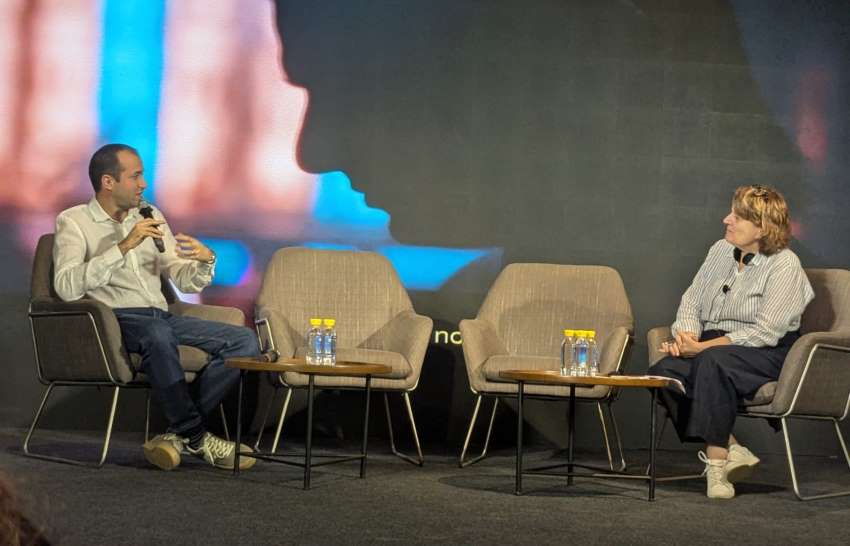FW
The US has imposed tariffs on imports from Europe. These include handbags, men’s suits, whiskeys and wine. Though the most valuable goods on the US list are exports of European aircraft and parts, the tariffs could also hit products made by Europe’s most recognized high-end brands. LVMH is particularly vulnerable to the proposed US levies, which target two of its primary product lines—wine and spirits like Dom Perignon, Moet & Chandon, and Hennessy—and leather goods under labels such as Donna Karan, Givenchy, Kenzo, and Louis Vuitton.
The new tariffs will increase costs that will undoubtedly be passed on to US consumers. Many US exporters oppose the proposed tariffs, which they say could boomerang and jeopardize thousands of American jobs. US whiskey producers have already become collateral damage from US steel and aluminum tariffs—which spurred the EU to retaliate with a 25 per cent tariff on US bourbon and whiskey.
The US market for luxury goods is among the top destinations for European companies like LVMH where the US made up almost a quarter of its total global sales last year. The US is currently evaluating whether to penalize French wine and other goods in response to France’s tax on Amazon, Facebook and Google.
"The first step will be for Burberry to open a store, enhanced by Tencent technology, offering vivid experiences that connect luxury customers’ social and online lives to their physical environments. This will be a unique space to test and learn, serving as a laboratory to trial innovation that can be expanded to the rest of the Burberry network in China."
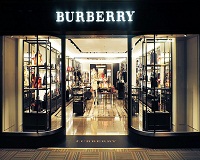 Premium fashion house Burberry and Chinese technological advanced powerhouse Tencent have entered into an exclusive partnership to build up social retail in China.
Premium fashion house Burberry and Chinese technological advanced powerhouse Tencent have entered into an exclusive partnership to build up social retail in China.
The partnership will pioneer a concept that blends social media and retail to create digital and physical spaces for engaged communities to interact, share and shop.
The first step will be for Burberry to open a store, enhanced by Tencent technology, offering vivid experiences that connect luxury customers’ social and online lives to their physical environments. This will be a unique space to test and learn, serving as a laboratory to trial innovation that can be expanded to the rest of the Burberry network in China.
The social retail store will open in Shenzhen, China’s technology hub, in the new MixC Shenzhen Bay development. The store is expected to open in the first half of next year.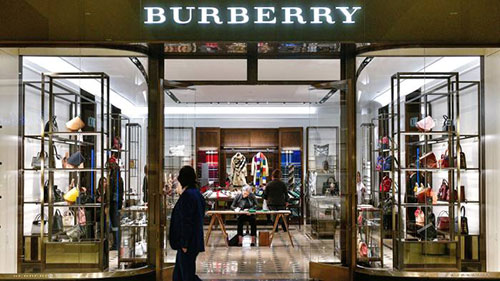
Davis Lin, Vice President of Tencent and responsible for Tencent Marketing Solutions said: “We are delighted to partner exclusively with Burberry on social retail in China. The future of retail lies in digitalisation. Through more efficient online-to-offline connections, more personalised engagement and shopping experiences, along with exceptional, differentiated content and value-added services, we will enhance the customer experience and deepen brand loyalty.”
Marco Gobbetti, Chief Executive Officer at Burberry said, “Social media is becoming such an important part of the luxury customer journey, particularly in the inspiration phase, and retail needs to keep pace with this. Continuing our history of innovation, we wanted to explore the connection between these touch points by merging social media and the store experience to reflect the way luxury customers are engaging with brands.
“China was the obvious place to start as it is one of the leading hubs for innovation and technology and Chinese consumers are some of the highest users of social media. We are thrilled to be partnering exclusively with Tencent on this pioneering project which is an example of the step-change in our ambitions for the next phase of our transformation,” he added.
Sales of the Global Fashion Group have risen 22.8 per cent in the third quarter. Net merchandising value has grown 29.2 per cent. The number of orders increased 20.8 per cent. The group’s customers are purchasing 7.5 per cent more often at 2.6 times per year with a 2.8 per cent increase in their average order value. Global Fashion Group registered 12.4 million active users in the third quarter, 15 per cent more. Global Fashion Group finished the third quarter with an adjusted ebitda margin of 2.8 per cent. The company has focused on enhancing its market leading customer experience through broadening its assortment, enhancing app functionalities and further cementing sustainability as a key pillar of the business.
Global Fashion Group is a part of Rocket Internet, a business accelerator that has promoted platforms like Zalando. In addition to the fashion segment, Global Fashion operates with food and consumer companies. In the third quarter, the company has introduced more than four hundred new brands on its platforms. In addition to launching its first eco-owned firm, Aere, the group has appointed a new sustainability director to pilot this segment. By the end of the year, the company estimates a net merchandising value growth of between 20 per cent and 23 per cent.
"It is not easy for these brands to move their production out of China as the country has an incredibly robust manufacturing infrastructure. The quality of goods produced in China and also the expertise of local manufacturers in the country is quite high. Other nations don’t have the same level of quality manufacturing that China does"
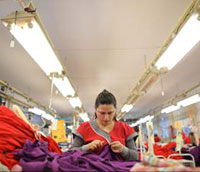 Traditionally known for its cheap and low quality products, China gradually became a major hub for brands manufacturing everything from fast fashion to high luxury. However, recent US-China trade war has compelled many brands to shift their focus away from China to other countries like Vietnam and Cambodia. Rather than remain at the mercy of tariff laws, these brands prefer to relocate their manufacturing bases to smaller countries. A case in point is Bangladesh whose exports increased from $29 billion in 2017 to over $40 billion this year.
Traditionally known for its cheap and low quality products, China gradually became a major hub for brands manufacturing everything from fast fashion to high luxury. However, recent US-China trade war has compelled many brands to shift their focus away from China to other countries like Vietnam and Cambodia. Rather than remain at the mercy of tariff laws, these brands prefer to relocate their manufacturing bases to smaller countries. A case in point is Bangladesh whose exports increased from $29 billion in 2017 to over $40 billion this year.
American brands are shifting their bases to these smaller countries to avoid the impacts of increasing tariffs. One such brand is BBC International, which licenses out Champion footwear. The brand traditionally manufactured its products in China but now is searching for new partners in other countries. An emerging lucrative option for the company is Vietnam, which recently signed the EU-Vietnam Free Trade Agreement with the EU. The deal would enable both the countries to cut tariffs on their clothing exports.
Robust infrastructure, ethical labor standards prevent exodus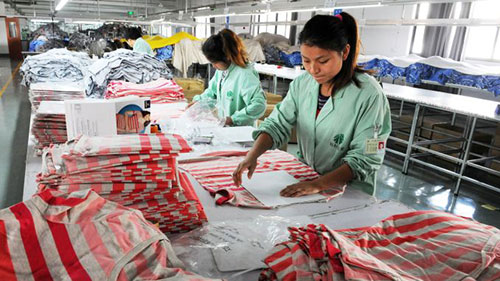
However, it is not easy for these brands to move their production out of China as the country has an incredibly robust manufacturing infrastructure. The quality of goods produced in China and also the expertise of local manufacturers in the country is quite high. Other nations don’t have the same level of quality manufacturing that China does.
Also, countries with less robust manufacturing infrastructures may also have less ethical standards for workers and the environment. This compels brands to stick to its partners in China even as manufacturing costs go up. Also, the cost of setting up production facilities in any new country is quite high and requires a high amount of resources just like Outerknown a small sustainable fashion brand that manufactures in six different countries, including China, Thailand and Vietnam. According to Meg Stoneburner, the brand’s director of sourcing and sustainability, each of these regions adds to their total manufacturing costs. Also, since the company focuses on sustainability it has to visit each facility and oversee all materials. This is challenging for larger brands too as they shift such a large volume of product and require a huge bandwidth of labor.
Overall, even though countries like Vietnam and Bangladesh seem attractive alternatives to China at the moment, they have their own set of drawbacks which makes it difficult for fashion brands to successfully navigate between manufacturing, tariffs and international trade.
Advance Denim has reduced its energy consumption per yard of fabric by 42 per cent since 2013. Saving is the result of applications of energy-efficient machine replacements and equipment upgrades. A state-of-the-art emissions tracking system ensures its thermal power plant is well below national standards for air pollutants. The company has reduced its water consumption by 58 per cent by investing in a brand-new reverse osmosis recycling system that will be able to recycle 100 per cent of the wastewater in the finishing process.
Advance Denim is the oldest denim manufacturer in China and is committed to making the most sustainable denim possible. Since fiber is at the heart of all denim, Advance Denim has set an aggressive strategic goal that will dramatically increase the percentage of sustainable green fibers used in the product line. Over the next five years, the company will increase its total use of green fibers to over 90 per cent of its total production. The company has made a big investment in the future of sustainable indigo dyeing. This new indigo dye process reduces water consumption in the dye process by up to 85 per cent. It also reduces wastewater completely and decreases energy consumption by 25 per cent.
For a fast-paced economy and to boost export growth, Bangladesh finds it important to improve its transport and logistics systems, says a new World Bank report. The report "Moving Forward: Connectivity and Logistics to Sustain Bangladesh's Success" explains that by working on logistics efficiency, Bangladesh can significantly increase export growth and sustain its position as a leading ready-made-garments and textile producer, and create more jobs.
The report notes that congestion on roads and in seaports, high logistics costs, inadequate infrastructure, distorted logistics service markets and fragmented governance hamper manufacturing and freight, further eroding Bangladesh's competitive edge and putting its robust growth path at risk.
"Bangladesh's congested transportation and often unsophisticated logistics systems impose high costs to the economy," said Mercy Tembon, World Bank country director for Bangladesh and Bhutan. Bangladesh can significantly optimize its connectivity, business environment, and competitiveness putting the country on the right path to becoming a dynamic upper-middle-income country. The report makes a point that improving Bangladesh's logistics requires a system-wide approach based on greater coordination among all public institutions involved in logistics and with the private sector, increasing the effective capacity of a core infrastructure, and removing distortions in logistics service markets to reduce costs and improve quality.
Bangladesh Denim Expo was held from November 5 to 6, 2019. The expo attracted 99 exhibitors from 11 countries and once again proved itself the most significant show of its kind in Bangladesh with a total of 5,692 visitors. The exhibitors showed fabrics, garments, threads, machinery, finishing equipment and accessories, positioning the show as a true representation of Bangladesh’s denim industry. Participating countries included China, Japan, Italy, India, Singapore, Brazil, Spain, Pakistan, Turkey and Germany. Responsibility was the theme of the expo. H&M showcased responsible sourcing practices. Highlights of the show included a series of product displays, presentations, seminar sessions and panel discussions. The aim was to encourage healthy debate and interaction among exhibitors and visitors to champion a more responsible denim industry.
The Bangladesh denim industry is the second largest denim exporter to the EU and the third largest to the United States. Bangladesh is now the world’s largest producer of denim and leads the way in terms of addressing some of the sustainability challenges related to denim production, including excessive use of water and chemicals. The Sustainable Apparel Forum saw more than 50 speakers from Bangladesh and overseas, sharing expert opinions across five panel discussions covering current issues about the country’s apparel industry.
Nandan Denim’s net sales were Rs 393.29 crores during the period ended September 30, 2019, as compared to Rs 464.30 crores during the period ended June 30, 2019. Net profit was Rs 2.20 crores for the period ended September 30, 2019, as against Rs 3.21 crores for the period ended June 30, 2019. EPS was Rs 0.46 for the period ended September 30, 2019, as compared to Rs 0.67 for the period ended June 30, 2019.
Net sales were Rs 393.29 crores during the period ended September 30, 2019, as compared to Rs 377.61 crores during the period ended September 30, 2018. Net profit was Rs 2.20 crores for the period ended September 30, 2019, as against Rs 7.29 crores for the period ended September 30, 2018. EPS was Rs 0.46 for the period ended September 30, 2019, as compared to Rs 1.65 for the period ended September 30, 2018.
Net sales were Rs 857.60 crores during the six month period ended September 30, 2019, as compared to Rs 737.23 crores during the six month period ended September 30, 2018. Net profit was Rs 5.41 crores for the six month period ended September 30, 2019, as against Rs 13.16 crores for the six month period ended September 30, 2018. EPS was Rs 1.13 for the six month period ended September 30, 2019, as compared to Rs 2.74 for the six month period ended September 30, 2018.
Applied DNA has developed CertainT system for marking leather through the leather value chain by using a DNA tag. This molecular-based technology can help protect leather products, brands, entire supply chains, and consumers from theft, counterfeiting, fraud and diversion. Applied DNA is a provider of molecular technologies that enable supply chain security, anti-counterfeiting and anti-theft technology, product genotyping and isolation of circulating tumor cells and the development of pre-clinical nucleic acid-based therapeutic drug candidates. Applied DNA makes life real and safe by providing innovative, molecular-based technology solutions and services that can help protect products, brands, entire supply chains, and intellectual property of companies, governments and consumers from theft, counterfeiting, fraud and diversion.
Applied DNA Sciences is a leader in Polymerase Chain Reaction (PCR)-based DNA manufacturing. It has announced successful DNA tagging of leather at one of the world’s largest tanneries in Asia. The work follows a successful research project undertaken within the UK that demonstrated Signature DNA could be used to trace hide of an animal from a farm to product in a store. Effective traceability of materials up the supply chain is the best way to manage sustainability risks and mitigate against potential environmental and social challenges.
The frontier between the real and virtual worlds is gradually eroding, inspiring a host of fashion designers. Inspired more than ever by the virtual world, fashion designers are now trying out new digital experiences, fusing reality and computer-generated images.
Augmented reality has taken on a new dimension over the years with an increasing number of imaginary Instagrammers. Like Kylie Jenner or other influential millennials, Brazilian avatar Lil Miquela posts a wealth of selfies, collaborates with luxury brands, promotes beauty products and creates her own tracks available on Spotify. With 1.7 million followers, Lil Miquela could therefore represent the future of influencers on social media. In 2018, Olivier Rousteing decided to showcase Margot, Shudu and Zhi, three virtual icons with perfect features. Up to then the creative director had championed diversity for models in the fashion industry. In a stranger and more disconcerting world, in the same year Balenciaga chose elastic virtual models without any backbone, who were able to endlessly contort themselves. Dior collaborated with the avatar Noonoouri and Louis Vuitton with Final Fantasy figures. The performance highlights exceptional progress in terms of computer-generated imagery and artificial intelligence. Notwithstanding the realisation that humans can become a bit dull and uninteresting in the light of flawless computer-generated physiques.


